Rappelling
When an individual or group must descend a vertical surface quickly, a rappel may be performed. Rappelling is a quick method of descent but it is extremely dangerous. These dangers include anchor failure, equipment failure, and individual error. Anchors in a mountainous environment should be selected carefully. Great care must be taken to load the anchor slowly and to ensure that no excessive stress is placed on the anchor. To ensure this, bounding rappels should be prohibited, and only walk down rappels used. Constant vigilance to every detail will guarantee a safe descent every time.
Selection of a Rappel Point
The selection of the rappel point depends on factors such as mission, cover, route, anchor points, and edge composition (loose or jagged rocks). There must be good anchors (primary and secondary). The anchor point should be above the rappeller's departure point. Suitable loading and off-loading platforms should be available.
Installation of the Rappel Point
A rappel lane should have equal tension between all anchor points by establishing primary and secondary anchor points. The rappel rope should not extend if one anchor point fails. The following methods of establishing an anchor can be performed with a single or double rope. A double rope application should be used when possible for safety purposes.
a. If a rappel lane is less than half the rope length, the climber may apply one of the following techniques:
(1) Double the rope and tie a three-loop bowline around the primary anchor to include the primary anchor inside two loops and enough rope in the third loop to run to the secondary anchor (another three-loop bowline secured with an overhand knot).
(2) Bowline secured with an overhand knot (or any appropriate anchor knot).
(3) Double the rope and establish a self-equalizing anchor system with a three-loop bowline or any other appropriate anchor knot
b. If a rappel lane is greater than half the rope length, the climber may apply one of the following techniques:
(1) Use two ropes. With both ropes, tie a round turn anchor bowline around a primary anchor point. Take the remaining rope (the tail from the primary anchor bowline) and tie another round turn anchor bowline to a secondary anchor point. The secondary anchor point should be in a direct line behind the primary anchor point. The anchor can be either natural or artificial.
(2) Use two ropes. Establish a multi-point anchor system using a bowline on a bight or any other appropriate anchor knot.
c. Situations may arise where, due to the length of the rappel, the rappel rope cannot be tied to the anchor (if the rope is used to tie the knots, it will be too short to accomplish the rappel). The following techniques can be used:
(1) When using a natural anchor, tie a sling rope, piece of webbing, or another rope around the anchor using proper techniques for slinging natural anchors. The rappel rope will have a fixed loop tied in one end, which is attached to the anchor created.
(2) When using an artificial anchor, tie off a sling rope, piece of webbing, runner, or another rope to form a loop. Use this loop to create an equalizing or pre-equalized anchor, to which the rappel rope will be attached.
Operation of the Rappel Point
Due to the inherent dangers of rappelling, special care must be taken to ensure a safe and successful descent.
a. Communication. Climbers at the top of a rappel point must be able to communicate with those at the bottom. During a tactical rappel, radios, hand signals, and rope signals are considered. For training situations use the commands shown in Table 7-1.
COMMAND |
GIVEN BY |
MEANING |
LANE NUMBER ___, ON RAPPEL |
Rappeller |
I am ready to begin rappelling. |
LANE NUMBER ___, ON BELAY |
Belayer |
I am on belay and you may begin your rappel. |
LANE NUMBER ___, OFF RAPPEL |
Rappeller |
I have completed the rappel, cleared the rappel lane, and am off the rope. |
LANE NUMBER ___, OFF BELAY |
Belayer |
I am off belay. |
Table 7-1. Rappel commands.
| Notes: | 1. | In a training environment, the lane number must be understood. |
| 2. | In a tactical situation, a series of tugs on the rope may be substituted for the oral commands to maintain noise discipline. The number of tugs used to indicate each command is IAW the unit SOP. |
b. Duties and Responsibilities.
(1) Duties of the rappel point commander are as follows:
Ensures that the anchors are sound and the knots are properly tied.
Ensures that loose rock and debris are cleared from the loading platform.
Allows only one man on the loading platform at a time and ensures that the rappel point is run orderly.
Ensures that each man is properly prepared for the particular rappel: gloves on, sleeves down, helmet with chin strap fastened, gear prepared properly, and rappel seat and knots correct (if required). He also ensures that the rappeller is hooked up to the rope correctly and is aware of the proper braking position.
Ensures that the proper signals or commands are used.
Dispatches each man down the rope.
Is the last man down the rope.
(2) Duties of the first rappeller down are as follows:
Selects a smooth route, for the rope, that is clear of sharp rocks.
Conducts a self-belay.
Clears the route, placing loose rocks far enough back on ledges to be out of the way, which the rope may dislodge.
Ensures the rope reaches the bottom or is at a place from which additional rappels can be made.
Ensures that the rope will run freely around the rappel point when pulled from below.
Clears the rappel lane by straightening all twists and tangles from the ropes.
Belays subsequent rappellers down the rope or monitors subsequent belayers
Takes charge of personnel as they arrive at the bottom (off-loading platform).
| Note: | A rappeller is always belayed from the bottom, except for the first man down. The first man belays himself down the rope using a self-belay attached to his rappel seat, which is hooked to the rappel rope with a friction knot. As the first man rappels down the rope, he "walks" the friction knot down with him. |
(3) Each rappeller down clears the ropes, and shouts, "Off rappel," (if the tactical situation permits). After the rope is cleared and the rappeller is off rappel, he acts as the belayer for next rappeller.
(4) Soldiers wear gloves for all types of rappels to protect their hands from rope burns.
(5) Rappellers descend in a smooth, controlled manner.
(6) The body forms an L-shape with the feet shoulder-width apart, legs straight, and buttocks parallel to the ground. When carrying equipment or additional weight, a modified L-shape is used with the legs slightly lower than the buttocks to compensate for the additional weight. The rappeller's back is straight. He looks over the brake shoulder. The guide hand is extended on the rope with the elbow extended and locked. The rope slides freely through the guide hand. The guide hand is used to adjust equipment and assist balance during descent. The rappeller grasps the rope firmly with the brake hand and places it in the brake position. Releasing tension on the rope and moving the brake hand regulates the rate of descent. The rappeller never lets go of the ropes with his brake hand until the rappel is complete.
c. Tying Off During the Rappel. It may be necessary to stop during descent. This can be accomplished by passing the rope around the body and placing three or more wraps around the guide-hand-side leg, or by tying off using the appropriate knot for the rappel device.
Recovery of the Rappel Point
After almost all personnel have descended, only two personnel will remain at the top of the rappel point. They will be responsible for establishing a retrievable rappel.
a. Establishing the Retrievable Rappel. To set up a retrievable rappel point, a climber must apply one of the following methods:
(1) Double the rope when the rappel is less than half the total length of the rope. Place the rope, with the bight formed by the midpoint, around the primary anchor. Join the tails of the rappel rope and throw the rope over the cliff. Tie a clove hitch around a carabiner, just below the anchor point, with the locking bar outside the carabiner away from the gate opening end and facing uphill. Snap the opposite standing portion into the carabiner. When the rappeller reaches the bottom, he pulls on that portion of the rope to which the carabiner is secured to allow the rope to slide around the anchor point.
(2) When the length of the rappel is greater than half the length of the rope used, join two ropes around the anchor point with an appropriate joining knot (except the square knot). Adjust the joining knot so that it is away from the anchor. Tie a clove hitch around a carabiner just below the anchor point with the locking bar outside the carabiner away from the gate opening end and facing uphill. Snap the opposite standing portion into the carabiner. Upon completion of the rappel, pull the rope to which the carabiner is secured to allow the rope to slide around the anchor point.
| Notes: | 1. | When setting up a retrievable rappel, use only a primary point; care is taken in selecting the point. |
| 2. | Ensure the soldiers have a safety line when approaching the rappel point, with only the rappeller going near the edge. |
b. Retrieving the Rappel Rope. The next to last rappeller will descend the lane, removing any twists, and routes the rope for easiest retrieval. Once he reaches the end of the rappel, he tests the rope for retrieval. If the rappel is retrievable, the last man will rappel down. Once he is off rappel, he pulls the lane down.
Types of Rappels
During military mountaineering operations, many types of rappels may be used. The following paragraphs describe some these rappels.
a. Hasty Rappel (Figure 7-4). The hasty rappel is used only on moderate pitches. Its main advantage is that it is easier and faster than other methods. Gloves are worn to prevent rope burns.
(1) Facing slightly sideways to the anchor, the rappeller places the ropes horizontally across his back. The hand nearest to the anchor is his guide hand, and the other is the brake hand.
(2) To stop, the rappeller brings his brake hand across in front of his body locking the rope. At the same time, he turns to face up toward the anchor point.

Figure 7-4. Hasty rappel.
b. Body Rappel (Figure 7-5). The rappeller faces the anchor point and straddles the rope. He then pulls the rope from behind, and runs it around either hip, diagonally across the chest, and back over the opposite shoulder. From there, the rope runs to the brake hand, which is on the same side of the hip that the rope crosses (for example, the right hip to the left shoulder to the right hand). The rappeller leads with the brake hand down and faces slightly sideways. The foot corresponding to the brake hand precedes the guide hand at all times. The rappeller keeps the guide hand on the rope above him to guide himself--not to brake himself. He must lean out at a sharp angle to the rock. He keeps his legs spread well apart and relatively straight for lateral stability, and his back straight to reduce friction. The BDU collar is turned up to prevent rope burns on the neck. Gloves are worn, and other clothing may be used to pad the shoulders and buttocks. To brake, the rappeller leans back and faces directly toward the rock area so his feet are horizontal to the ground.
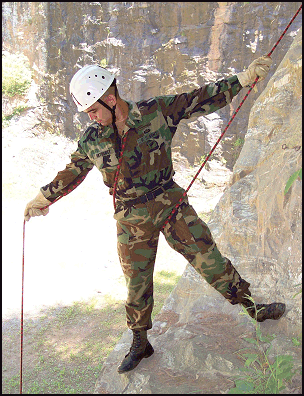
Figure 7-5. Body rappel.
| Notes: | 1. | Hasty rappels and body rappels are not used on pitches that have overhangs; feet must maintain surface contact. |
| 2. | Hasty rappels and body rappels are not belayed from below. |
c. Seat-Hip Rappel (Figure 7-6). The seat rappel differs from the body rappel in that the friction is absorbed by a carabiner that is inserted in a sling rope seat and fastened to the rappeller. This method provides a faster and more frictional descent than other methods. Gloves can be worn to prevent rope burns.
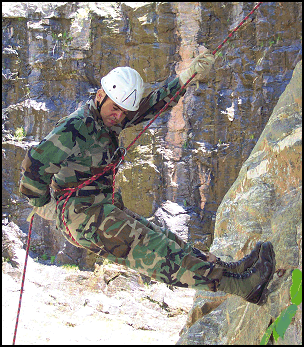
Figure 7-6. Seat-hip rappel.
(1) An alternate technique is to insert two carabiners opposite and opposed. Then insert a locking carabiner into the two carabiners with opening gate on brake hand side. Then run the rope through the single carabiner. This helps to keep the rappel rope away from the harness.
(2) To hook up for the seat-hip method, stand to one side of the rope. If using a right-hand brake, stand to the left of the rappel rope facing the anchor; if using a left-hand brake, stand to the right of the rappel rope. Place the rappel rope(s) into the locking carabiner; slack is taken between the locking carabiner and anchor point and wrapped around the shaft of the locking carabiner and placed into the gate so that a round turn is made around the shaft of the locking carabiner (Figure 7-7). Any remaining slack is pulled toward the uphill anchor point. If a single rope is used, repeat this process to place two round turns around the shaft of the locking carabiner. Face the anchor point and descend using the upper hand as the guide and the lower hand as the brake. This method has minimal friction, and is fast and safe. However, care is taken that the rope is hooked correctly into the carabiner to avoid the gate being opened by the rope. Loose clothing or equipment around the waist may be accidentally pulled into the locking carabiner and lock (stop) the rappel. For this reason, the rappeller must tuck in his shirt and keep his equipment out of the way during his descent.
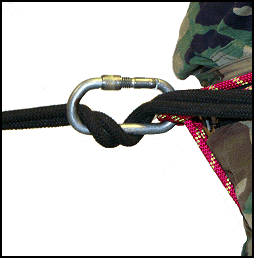
Figure 7-7. Proper hookup using carabiner wrap.
d. Figure-Eight Descender. The figure-eight descender puts less kinks in the rope, and it can be used with one or two ropes (Figure 7-8).
(1) To use the figure-eight descender, pass a bight through the large eye and then over the small eye onto the neck. Place the small eye into a locking carabiner. To reduce the amount of friction on the figure-eight, place the original bight into the carabiner and not around the neck of the descender. (Less friction requires more braking force from the rappeller.)
(2) The guide hand goes on the rope that is running from the anchor. The brake hand goes on the slack rope. The brake is applied by moving the brake hand to the rear or downward.
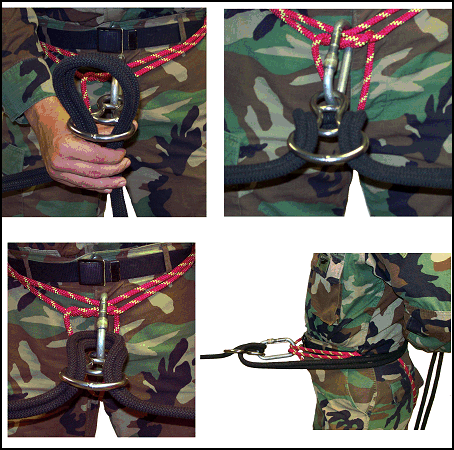
Figure 7-8. Figure-eight descender.
d. Other Devices. Many different types of devices are similar in design and operation to the basic plate. These include slots or plates and tubers. Most of these devices can accommodate two ropes not greater than 7/16 of an inch in size. Follow manufacturer's directions for using these devices for rappelling.
e. Extending the Rappel Device. The rappel device can be extended using either a piece of webbing or cordage to move the device away from the body and the harness, preventing accidental damage (Figure 7-9). It also allows for easier self-belay.
f. Self-Belay Techniques. A friction knot can be used as a belay for a rappeller (Figure 7-9). The knot acts as the brake hand when the rappeller must work or negotiate an obstacle requiring the use of both hands. The knot acts as a belay if the rappeller loses control of the rope.
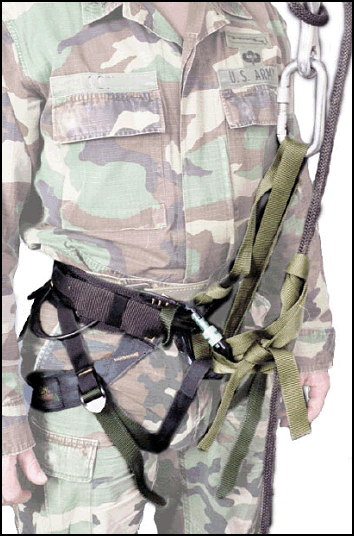
Figure 7-9. Extended hookup with self-belay.
Ultimate Survival Knife & Kit |
List Price: 61.99 Our Price: 39.95 |
This 15 inch survival knife with drop point blade features a thick quality stainless steel blade with serrated top edge. Textured and ribbed solid metal handle and guard. Nylon sheath. Survival kit includes a hollow grip with a compass top to store items within the knife itself, as well as additional pouches on the sheath to hold the rest. Complete survival kit. Click Here to Buy the Survival Knife Now. |
|
